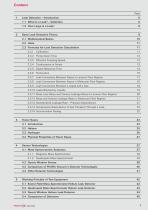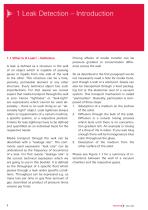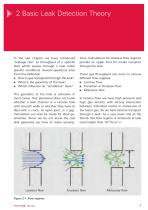 Website:
Pfeiffer Vacuum+Fab Solutions
Website:
Pfeiffer Vacuum+Fab Solutions
Group: Busch Group
Catalog excerpts

Leading. Dependable. Customer Friendly. Pfeiffer Vacuum stands for innovative and custom vacuum solutions worldwide, for German engineering art, competent advice and reliable service. Ever since the invention of the turbopump, we’ve industry and Cbeen setting standards in our drive us in thethis claim OMPENDIUM to leadership will continue to future. ta subject to change without prior notice. PK 0084 PE (July 2010/10) Germany Pfeiffer Vacuum GmbH Headquarters Phone: +49 (0) 6441 802-0 info@pfeiffer-vacuum.de ited States iffer Vacuum Inc. one: +1 603 578 6500 itzerland iffer Vacuum (Schweiz) AG one: +41 44 444 22 55 o@pfeiffer-vacuum.ch eden Are you looking for a iffer Vacuum Scandinavia AB solution? perfect vacuum one: +46 8 590Please contact us: 748 10 es@pfeiffer-vacuum.se Benelux Pfeiffer Vacuum GmbH Sales & Service Benelux Phone: +800-pfeiffer benelux@pfeiffer-vacuum.de China Great Britain Pfeiffer Vacuum Ltd. Phone: +44 1908 500600 sales@pfeiffer-vacuum.co.uk Sweden Pfeiffer Phone: sales@ India Pfeiffer Vacuum India Ltd. Phone: +91 40 2775 0014 pfeiffer@vsnl.net Switzer Pfeiffer Phone: info@p Italy Pfeiffer Vacuum Italia S.p.A. Phone: +39 02 93 99 05 1 United Pfeiffer Phone:
Open the catalog to page 1
Masthead Author: Team of authors Published by: Pfeiffer Vacuum GmbH, Headquarters Berliner Strasse 43, D-35614 Asslar/Germany T +49-(0) 6441-802-0, F +49-(0) 6441-802-1202 info@pfeiffer-vacuum.de, www.pfeiffer-vacuum.com Subject to change without notice Note Leak Detection Compendium Regardless of their nature, the information and promotional statements contained in this Compendium and, in particular, the descriptions, photographs, illustrations, drawings, samples and information relating to quality, nature, composition, performance, consumption and usability, as well as the dimensions and...
Open the catalog to page 2
1 Leak Detection - Introduction 6 1.1 What Is a Leak? - Definition 6 2 Basic Leak Detection Theory 9 2.3 Formulas for Leak Detection Calculations 11 2.3.2 Pump Down Time 12 2.3.3 Effective Pumping Speed 13 2.3.5 Signal Response Time 14 2.3.7 Leak Conversion Between Gases in Laminar Flow Regime 17 2.3.8 Leak Conversion Between Gases in Molecular Flow Regime 18 2.3.9 Leak Conversion Between a Liquid and a Gas 18 2.3.10 Leaks Blocked by Liquids 19 2.3.11 Mass Loss Rates and Volume Leakage Rates in Laminar Flow Regime 20 2.3.12 Mass and Volume Leakage Rates in Molecular Flow Regime 21 2.3.13...
Open the catalog to page 3
6 Leak Detection Methods 46 6.2 Integral Test of Enclosed Parts Under Vacuum 48 6.5 Integral Test at Atmospheric Pressure 52 6.6 Integral Vacuum Test 53 7 Selection of a Leak Detection Method 55 7.4 Tracer Gas Leak Detection 56 7.5 Selection of Tracer Gases 57 8 Industrial Leak Detection Systems and Helium Recovery Units 57 8.1 Leak Detection Systems 57 8.2 Helium Recovery Units 63 9 Leak Detection Seminars and Practical Trainings 64 11.1.1 Flow Rate Conversion Units 66 11.1.2 Pressure Conversion Units 66 11.2 Helium Leak Detectors - Overview of Series and Applications 68
Open the catalog to page 4
1 Leak Detection – Introduction 1.1 What Is A Leak? – Definition A leak is defined as a structure in the wall of an object which is capable of passing gases or liquids from one side of the wall to the other. This structure can be a hole, porosity, permeable element or any other structure. Every technical object has such imperfections. For that reason we cannot expect that media transport through the wall is zero. Hence “tightness” or “leak-tight” are expressions which cannot be used absolutely – there is no such thing as an “absolutely tight” object. Leak tightness always refers to...
Open the catalog to page 6
Absorption Inclusion into solids or liquids. Follows adsorption Adsorption Attachment of gases on the surface of solids or liquids Permeation Consists of adsorption diffusion desorption Desorption Release of attached gases from the surface Leakage A hole in the wall High pressure Figure 1-1: Interactions between the wall of a vacuum chamber and the respective gases In case that the wall of a test object really has a small hole and there is a pressure difference from one side of the wall to the other we can observe media flow from the highpressure side to the low-pressure side. Both liquids...
Open the catalog to page 7
1.2 How Large Is A Leak? In order to get a feeling for diameters of leaks one can calculate the diameter of a leak assuming that it is an ideal tube with smooth walls. Technically Gas tight tight Virus tight Bacteria tight Water tight Water dropping Leak diameter Leakage rate Escape time of a bubble with 1 cc Leak location by sniffing Leak quantification under atmospheric conditions Local and integral vacuum test Test of sealed objects Test methods Visual Ultrasonic Pressure decay Bubble test Tracer gas at ambient pressure Tracer gas in vacuum Figure 1-2: Magnitudes of leak size and leakage...
Open the catalog to page 8
2 Basic Leak Detection Theory In the last chapter we have introduced “leakage rate” as throughput of a specific fluid which passes through a leak under specific conditions. Several questions arise from this definition: ■ How is gas transported through the leak? ■ What is the geometry of the leak? ■ Which influence do “conditions” have? The geometry of the hole is unknown in most cases. Test personnel does not know whether a leak channel is a circular hole with smooth walls or whether they have to deal with a crack, an open joint, or a gap. Calculation can only be made for ideal geometries....
Open the catalog to page 9
Capillary diameter [µm] Figure 2-2: Transport of different media through a leak (calculated for a temperature of 20 °C and a wall thickness of 1 cm) In molecular flow we have low pressures and a low gas density. There are almost no interactions between individual atoms or molecules of the tracer gas. The molecular flow regime is dominant at leak rates lower than 10-8 Pa m3 s-1. The transition between laminar-viscous flow and molecular flow is not instantaneous. The transition regime is called Knudsen flow. If you are not certain, which flow regime you are in please calculate both...
Open the catalog to page 10All Pfeiffer Vacuum+Fab Solutions catalogs and technical brochures
-
HiQuad Neo
8 Pages
-
DuoVane 22
4 Pages
-
Product overview
56 Pages
-
HiCube Neo
8 Pages
-
SpeedAir
8 Pages
-
HiPace 80 Neo
12 Pages
-
Duo 1.6/M
16 Pages
-
SmartVane
8 Pages
-
Turbo Pumping Stations - HiCube
20 Pages
-
Pascal 2021 HW
4 Pages
-
Roots Pumps
32 Pages
-
Vacuum for life
32 Pages
-
Rotary vane pumps - DuoLine
16 Pages
-
ActiveLine Gauges
8 Pages
-
Transmitters - ActiveLine
8 Pages
-
Duo 3 DC - Rotary vane pumps
4 Pages
-
HiPace 30 - Turbopumps
4 Pages
-
Chambers and Components (Part 3.3)
399 Pages
-
Vacuum generation (Part 3.1)
475 Pages
-
Know-how book (Part 2)
140 Pages
Archived catalogs
-
AMI 1000
8 Pages




























































